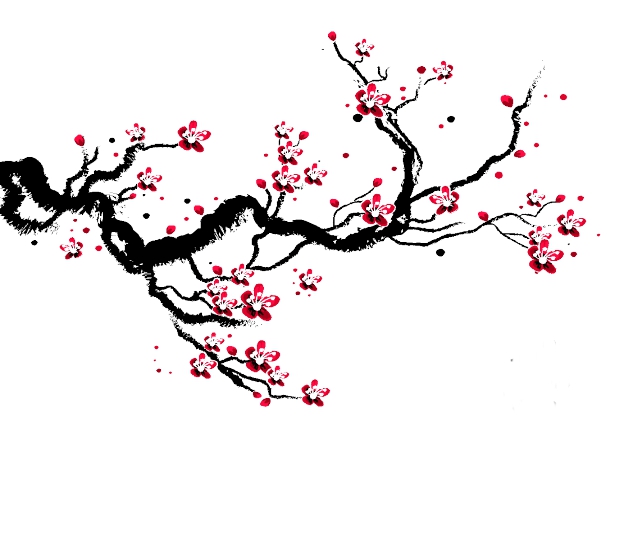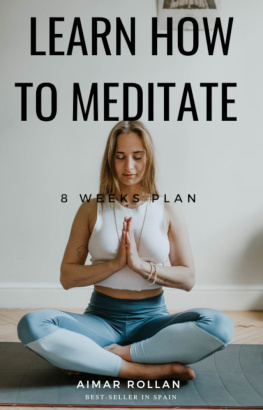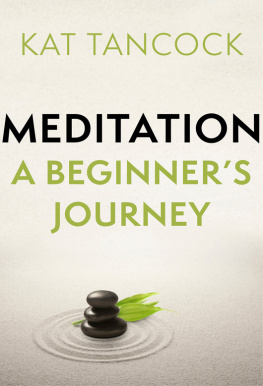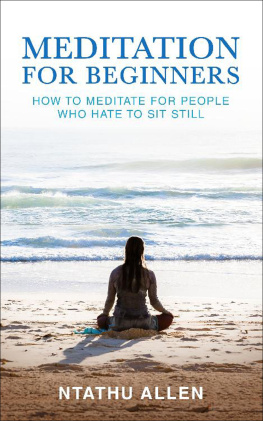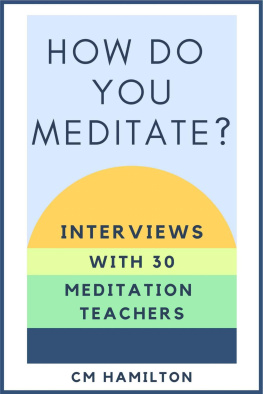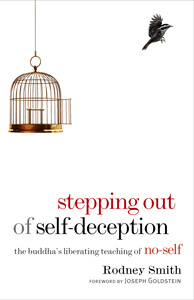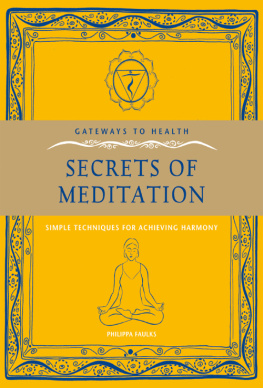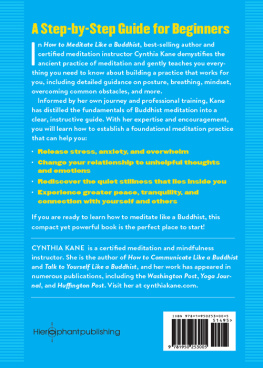Looking Within: A Guide on Meditation
A simple and powerful tool to Enrich and Empower your life!
Written by Justin Gates and Charles McBride
Additional material supplied by Alethea J. Thompson, David Edge, J. A. Michaels, A. W. Dodson, Tarran, Trisskar, Soror E., and Naag Loki Shivanath.
Legal:
All versions of this book are published and Distributed by Knights of Awakening (KOA) publishing and its partners.
2020
All rights reserved.
No part of this publication may be reproduced, stored in a retrieval system, or transmitted in any form or by any means electronic, mechanic, photocopying, recording, or otherwise without the prior written permission by the authors and KOA Publishing, Knights of Awakening.
NOTICE
All the material contained in this book is provided for educational and informational purposes only. No responsibility is assumed by the publisher or authors for any injury and/or damage to persons or property as a matter of products liability, negligence, or otherwise, or from any use or operation of any methods, products, instructions, or ideas contained in the material herein. While every attempt has been made to provide information that is both accurate and effective, the author does not assume any responsibility for the accuracy or use/misuse of this information.
The Contents of this book are not intended to be a substitute for professional medical advice, diagnosis, or treatment. Always seek the advice of your physician or other qualified health providers with any questions you may have regarding a medical or mental health condition. Never disregard professional advice or delay in seeking it because of something you have read in this book.
Special Thanks
A very special thanks go out to; Alethea J. Thompson, David Edge, J. A. Michaels, A. W. Dodson, Tarran, Trisskar, Soror E., Jason Gonzalez, and Naag Loki Shivanath, for taking time out of your day and away from your friends and family to help us in getting this book put together. Your insight and perspective was a great help and addition to our book and the training modules! A big thank you goes out to the KOA family for giving us your support and love. Thank you to our families and friends, who gave us just enough time and space to get this book researched, written, and done. And finally a big shout-out to YOU , for investing your time into this book, without you we would not be able to carry on!
Introduction
We believe that most everyone can and should practice at the very least, basic mindfulness and meditation techniques, no matter how severe or minor your stress and other issues affecting you. The benefits of these techniques are life-changing for most.
You have been in a meditative state at a basic level without being aware of it many times in your life. For example, have you ever found yourself daydreaming where you focused so deeply on something that you were in a trance-like state? How about when you are out walking and something is weighing on your mind and you suddenly realize that you are at your destination but dont recall how you got there? Each of these is an example of unintentional meditation.
According to the National Center for Complementary and Integrative Health (NCCIH), a 2012 study shows that roughly 8% (18 million) of adults in the US report practicing some sort of meditation practice (Mantra meditation, Mindfulness meditation, Spiritual meditation, and meditation used as a part of other practices including yoga, tai chi, and qi gong). Roughly 927,000 children practiced some form of meditation. An article from TIME magazine in January 2018 reports that the number of 8% is estimated to have grown to almost 10%
*https://nccih.nih.gov/research/statistics/NHIS/2012/mind-body/meditation
In recent years, surveys have been conducted to estimate how many people meditate in the world but there are no reliable results. A rough estimation of people who meditate globally ranges between 200 and 500 million people. Different groups of people meditate in different ways. Some recite mantras, some use Mala beads, some chant, and some prefer walking meditation. In the West especially, the mindfulness practice of sitting and watching the breath is very widespread. www.mindworks.org
This is what is great about meditation; various people process things differently and there are meditation techniques to fit almost everyone! It can be practiced by anybody irrespective of age or gender and the recent trends indicate that the popularity of meditation has increased exponentially, especially in the last 10 years or so.
What makes meditation universally appealing? Millions of meditation practitioners report that regular meditation practice makes you mentally, as well as physically, healthy. It positively influences your mind over time and when you persevere with practicing meditation, you will be blessed with clarity of thought. You will also notice that much of the harmful stress you experience becomes manageable and less damaging. They also claim that meditation techniques will positively influence your bodily functions too, such as keeping unwanted stress under control. With effective breath control, your muscle tension will be lowered greatly; your blood flow will get increased, and a deeper level of physical relaxation will become a reality. Meditation has also been linked to improving your immune system and can teach you how to relax your nervous system. These aspects demonstrate only a fraction of the subtle ways in which meditation works, and why it should be understood more deeply. As we dig deeper into this introductory guide, you will realize that meditation is a viable option available to most people to be rid of unwanted worry and stress, which is normally associated with this fast-paced world.
As a side note:
The following material does not address or account for chemical imbalances, biological and physiological factors, or any physical or mental health issues which may or may not directly affect this material as it relates to conscious and subconscious thought and patterns, moving and sitting. As always, if you suffer from a condition like these or others not mentioned, then you should seek the advice of licensed professionals in your area. If you are under the care of a health professional, please consult them before using any of the techniques provided in this material. Thank you.
This book is intended to be a gateway, into the practice of meditation. In the following pages, we will bring meditation to a place where you will find it useful and beneficial to your life regardless of your religion(s), philosophy(ies), or lack thereof. Meditation is for, and useful to, everyone. We have added a simple scale of difficulty so that you can use your best judgment when you consider practicing a particular exercise that we present.
Every so often, throughout the coursework, we will pause and do some journaling. Journaling is a great way to reinforce everything we cover and is required to get the maximum amount of success from this material. Use whatever form of journaling that you are most comfortable with. We have added some blank lines for this purpose if you so choose. Remember that this material is for YOU!
The biggest mistake made with meditation manuals of any kind is when the student does more reading, and less doing. This may sound like something incredibly obvious to most, but you'd be surprised how often a student will read a book through, and only then implement the first chapters. The problem with this is often future chapters build on an understanding of the method, principals, and application that need to be learned and practiced in order. Books like this one are more like a journey, and if you speed through this journey you will miss the signposts as well as the lane transitions.

